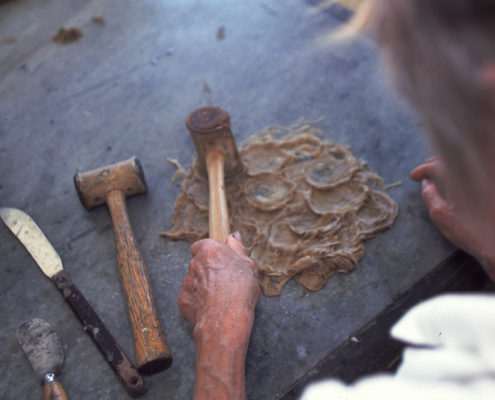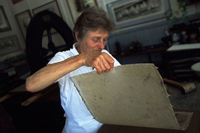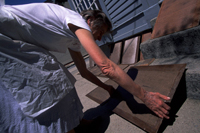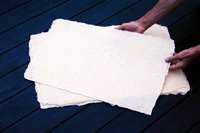The Paper Making Process
Striving to make a work of art in which materials, process, and image are harmoniously combined, Ilse has developed the techniques required to make fine papers. Since 1992, she has refined her paper-making methods in the belief that the paper she prints on is an integral part of her creative process.







 The sheets dry quickly and must be rotated occasionally to drain and dry evenly. It is a busy process, forming the sheets and tending to the drying at the same time.
The sheets dry quickly and must be rotated occasionally to drain and dry evenly. It is a busy process, forming the sheets and tending to the drying at the same time. While still damp, the sheets are placed in the binding press with a felt blanket. This part of the process removes excess moisture and binds together any areas of the sheet that may have been separated by bubbles in the molding stage. Finally, the finished sheets of Third & Elm hand made paper are loosely stacked to air and to await printing.
While still damp, the sheets are placed in the binding press with a felt blanket. This part of the process removes excess moisture and binds together any areas of the sheet that may have been separated by bubbles in the molding stage. Finally, the finished sheets of Third & Elm hand made paper are loosely stacked to air and to await printing.